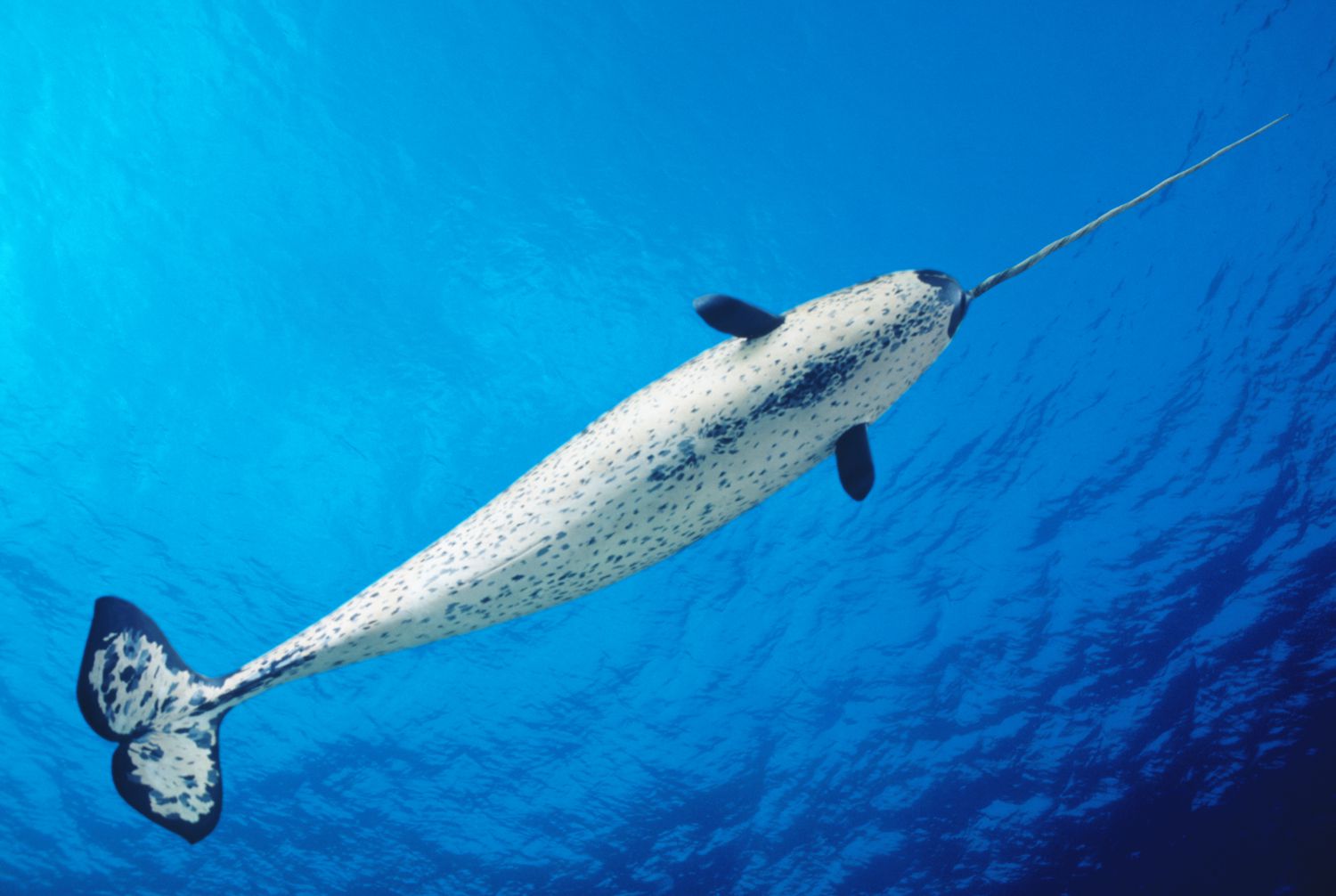What is a Narwhal?
A narwhal (Monodon monoceros) is a medium-sized whale that inhabits the cold waters of the Arctic Ocean. They belong to the cetacean family, alongside whales, dolphins, and porpoises. Their most notable feature is the elongated tusk that males (and occasionally females) possess, which can grow up to 10 feet long. But unlike a mythical unicorn, this tusk isn’t on the narwhal’s forehead — it’s actually a tooth!
A Tooth, Not a Horn
While many people may think of the narwhal’s tusk as a horn, it’s actually a large canine tooth that spirals counterclockwise as it grows. Typically, males have a single tusk, but some rare narwhals have been found with two tusks. This tooth is full of sensory capabilities, allowing the narwhal to detect changes in its environment, such as salinity levels and water temperature. While scientists are still unraveling the complete purpose of the tusk, it’s clear that it’s more than just a tool for male-to-male combat or attracting mates, as once believed.
The Life of a Narwhal
Narwhals live in small pods, typically consisting of 10-20 individuals. However, during migration or summer feeding, they may form larger groups. These mammals are known for their deep diving abilities, often plunging to depths of over 4,900 feet in search of food. Their diet mainly consists of fish, squid, and shrimp, making them formidable hunters in the deep, dark waters of the Arctic.
Migration and Habitats
Narwhals are found in the icy waters of Canada, Greenland, Norway, and Russia. They are seasonal migrants, moving between coastal areas in the summer and offshore waters in the winter. During the winter, narwhals use their impressive tusks to break through the thick ice in search of breathing holes.
The Role of the Tusk in Narwhal Culture
Narwhal tusks have played an important role in human history as well. Indigenous Inuit cultures have long revered narwhals, and their tusks were once believed to possess magical properties. In medieval Europe, narwhal tusks were sold as unicorn horns, thought to cure diseases, purify water, and protect against poison. Today, they remain a symbol of the Arctic’s rich biodiversity and cultural heritage.
Social Interactions and “Tusk Fencing”
In the narwhal world, tusks aren’t just for show. Narwhals engage in a behavior known as “tusk fencing,” where two males rub their tusks together. Scientists once thought this was a form of battle, but now some believe it may be a way for narwhals to communicate and share information about their environment, almost like an underwater handshake.
Narwhals and Conservation
Despite their mystique, narwhals face a number of threats in the modern world. Climate change is rapidly altering the Arctic ecosystem, reducing sea ice and impacting their habitat. As the ice melts, narwhals are forced to compete with more predators and are exposed to human activities like shipping, oil exploration, and commercial fishing. Their tusks also make them targets for poaching, though international regulations now protect narwhals from the illegal ivory trade.
Why Are Narwhals Important?
Narwhals are considered an indicator species, meaning their health reflects the overall condition of the Arctic ecosystem. As ice-dependent animals, they are highly sensitive to changes in sea ice, making them an important species for scientists to monitor in the face of global warming. The survival of narwhals is closely tied to the future of the Arctic itself.
Fascinating Narwhal Facts
- Narwhals can dive deep: They are some of the deepest-diving mammals, capable of diving nearly a mile underwater.
- They communicate with clicks and whistles: Narwhals use echolocation to navigate and hunt in the dark waters of the Arctic.
- The tusk has up to 10 million nerve endings: This makes it an incredibly sensitive organ, possibly even detecting changes in water pressure and temperature.
- Females can live longer than males: Female narwhals have been known to live up to 50 years, while males typically live about 40 years.
- They are slow breeders: Narwhals have long gestation periods of about 15 months, which makes population recovery challenging in the face of environmental threats.
Conclusion: Guardians of the Arctic
Narwhals are more than just “unicorns of the sea.” They are key players in the Arctic ecosystem, cultural icons, and symbols of the fragility of our planet’s coldest regions. As climate change and human activity continue to impact the Arctic, it’s crucial that we understand and protect these mysterious creatures. Narwhals remind us that the natural world is full of wonders that we are only just beginning to understand — and it’s up to us to preserve them for future generations.
FAQs
1. What do narwhals use their tusks for?
Narwhals use their tusks for sensory purposes, detecting changes in their environment. They also engage in a behavior called “tusk fencing,” which may be a form of communication.
2. Are narwhals endangered?
Narwhals are not currently classified as endangered, but they are considered vulnerable due to the effects of climate change and human activities in the Arctic.
3. Why are narwhals called unicorns of the sea?
Narwhals are often called unicorns of the sea because of their long, spiraled tusks, which resemble the mythical unicorn’s horn.
4. Can both male and female narwhals have tusks?
While tusks are more common in males, some female narwhals do grow tusks, although they are usually shorter and less spiraled.
5. How long can narwhals live?
Narwhals can live up to 50 years, with females typically living longer than males.











